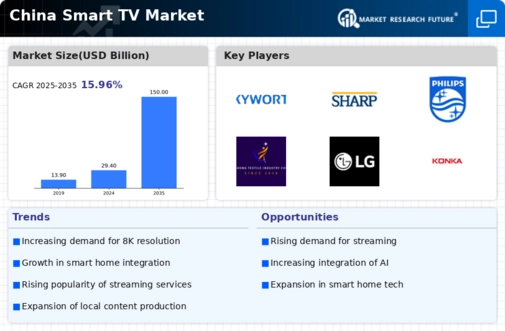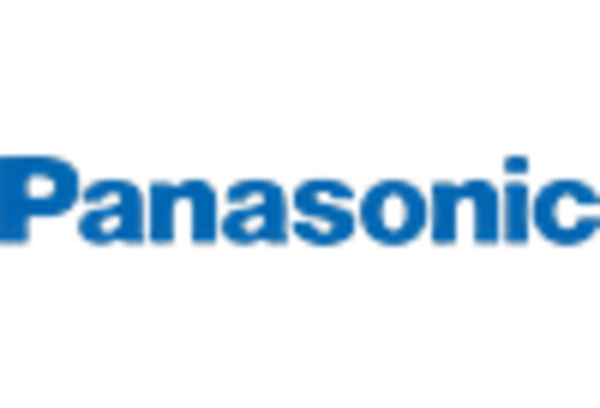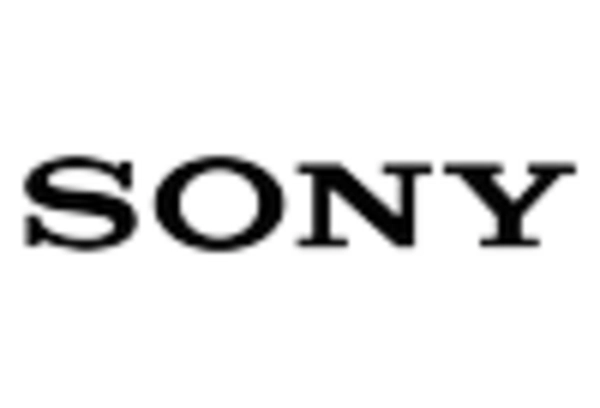The smart tv market in China is characterized by intense competition and rapid technological advancements. Key growth drivers include increasing consumer demand for high-definition displays, smart features, and integrated streaming services. Major players such as TCL Technology (CN), Hisense Group (CN), and Samsung Electronics (KR) are strategically positioned to leverage these trends. TCL Technology (CN) focuses on innovation and affordability, while Hisense Group (CN) emphasizes premium features and smart home integration. Samsung Electronics (KR) continues to invest heavily in research and development, particularly in QLED technology, which enhances its competitive edge. Collectively, these strategies foster a dynamic competitive environment, pushing companies to continuously innovate and adapt to consumer preferences.
In terms of business tactics, localizing manufacturing and optimizing supply chains are critical for success in this market. The competitive structure appears moderately fragmented, with several domestic and international players vying for market share. The influence of key players is substantial, as they not only drive technological advancements but also set pricing strategies that impact the entire market landscape. This competitive interplay encourages ongoing innovation and responsiveness to consumer needs.
In October 2025, TCL Technology (CN) announced a partnership with a leading AI firm to enhance its smart tv capabilities. This collaboration aims to integrate advanced AI features that personalize user experiences, potentially increasing customer loyalty and market share. Such strategic moves indicate TCL's commitment to remaining at the forefront of technological innovation, which is essential in a market that increasingly values smart functionalities.
In September 2025, Hisense Group (CN) launched a new line of OLED smart tvs, which are designed to compete directly with premium offerings from international brands. This product line not only showcases Hisense's commitment to quality but also reflects a strategic shift towards higher-end market segments. By diversifying its product range, Hisense aims to capture a broader audience, thereby enhancing its competitive positioning.
In August 2025, Samsung Electronics (KR) unveiled its latest QLED smart tv series, featuring enhanced gaming capabilities and integration with smart home devices. This launch is particularly significant as it aligns with the growing trend of gaming and home automation, appealing to a tech-savvy consumer base. Samsung's focus on high-performance features positions it favorably against competitors, reinforcing its market leadership.
As of November 2025, current competitive trends in the smart tv market include a pronounced shift towards digitalization, sustainability, and AI integration. Strategic alliances are increasingly shaping the landscape, as companies recognize the value of collaboration in enhancing technological capabilities. Looking ahead, competitive differentiation is likely to evolve from traditional price-based competition to a focus on innovation, advanced technology, and supply chain reliability. This shift underscores the importance of not only meeting consumer demands but also anticipating future trends in a rapidly changing market.
















Leave a Comment